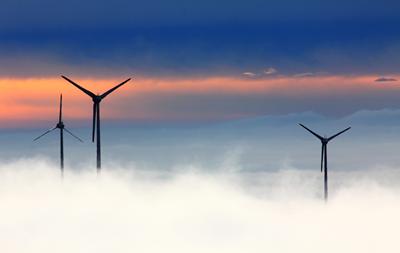Transition to renewable energy needs to consider global threat to species

A new study has shown the extent to which countries drive biodiversity loss overseas through their demand for electric power. For some countries more than half of the impact on species is overseas. While the study found that the shift towards renewable electric needed to combat climate change would likely reduce the impacts on biodiversity, the overseas impact makes it difficult to understand how “green” our electric really is.
The researchers, led by Dr Robert Holland, a senior research fellow at the University of Southampton are calling for countries to enact strong regulations to ensure that energy transitions are done in such a way as to protect biodiversity, and to consider both the local and global impacts of steps taken to combat global warming.
The scientists, analysed the impact of fossil and renewable power sectors on nearly 4000 threatened birds, mammals and amphibians. For each species they traced the threats these species faced from the electric sector along global supply chains. This included the obvious bits of infrastructure that we see around us such as wind turbines or power stations. But the researchers also examined the impacts on biodiversity of all the materials and components that go into building our electricity infrastructure.
In some countries, the demand for electric power shifts much of its impact on biodiversity to other countries as threats are displaced along international supply chains. The region with the largest international impact was Europe with more than half the total biodiversity impact associated with its electric demand being displaced overseas.
The UK was in the top five countries to pass on much of its risk to other countries along with Japan, China, the United States and India. This contrasts with other countries and regions where far more of the biodiversity impacts are going to meet demand for electric in other countries. For example, a quarter of the biodiversity threat in Latin America is driven by demand for electric in Europe and North America. In the case of countries such as Colombia and Indonesia the threats embodied in exports to meet global demand for electric are greater than the threats associated with their own electric demands.
The researchers advise that future energy policy must consider these unequal international impacts to identify the best routes to decarbonisation.
To reach their findings, they studied the International Union for Conservation of Nature (IUCN) Red List which represent the most comprehensive resource on threats to species globally. They then combined this with a model of the global economy that describes trade between all countries to determine where the impacts on biodiversity associated with the electricity sector occurred.
Solar and wind power were found to have the least impact on biodiversity globally, with coal having the highest impact. As the size of the solar and wind sectors increases over the coming decades, driven by our need to decarbonise society, the impact that these renewable sources will have on biodiversity will also likely increase. At the moment it is impossible to predict the implications of such an energy transformation. As such governments must work to properly understand all the options that they have for decarbonisation - it is unlikely that there is an easy fix. For example while deserts such as the Sahara are often seen as perfect places for large scale solar arrays the biodiversity in this area is extremely fragile and could be lost if adequate care is not taken.
Dr Holland said “Much of our thinking around the climate change focuses on ways to reduce greenhouse gas emissions and does not consider the wider environmental implication of our choices. What this study shows is that there are ways to address climate change while at the same time delivering benefits for global biodiversity. Given that recent studies have highlighted the loss of species globally, identifying such win-wins is essential for government to act to address the two most pressing challenges of our time”.
Kate Scott from the University of Manchester who led the economic analysis says ““Major energy transitions are being planned around the world to keep average global warming to well below 2 degrees. Countries are currently debating how to do this at the COP25 in Madrid. Our study shows that countries like the UK that rely on imports to develop its clean energy infrastructure will drive environmental impacts in other, often less economically developed, parts of the world. I think it’s imperative that the UK government takes steps to address these ecologically unequal trade exchanges.”
Professor Gail Taylor from the University of Southampton and UC Davis says “‘The USA is identified in this study as one of the nations where the electric sector has a significant impact on biodiversity, outside of territorial boundaries. As such, we should be mindful of this and any future policy initiatives that exacerbate this situation further. On the other hand, we can afford to be optimistic that as the deployment of new renewable technologies accelerates, the US is in a strong position to minimize any adverse consequences on global biodiversity.”
The study, published in the Proceedings of the National Academy of Sciences, was a collaboration between the University of Southampton, Manchester University and UCL in the UK, and UC Davis in the USA, as part of the UK Energy Research Centre. It sought to understand how decisions that we are currently making about pathways to decarbonisation will impact biodiversity.
